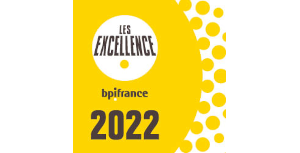The Soleau envelope, named after its inventor Edouard Soleau, has been a recognized method in France since 1910 for creating proof of the prior existence of an intellectual creation. This system, managed by the National Institute of Industrial Property (INPI), is known for being simple and economical.

The purpose of the Soleau envelope is to allow inventors and creators to prove that they are the originators of an invention or, more generally, a creation, at a given date. The Soleau envelope does not grant an intellectual property right like a patent, design, model, or trademark, but it provides important evidence regarding the date of a creation. This date-certain service applies to patentable ideas, of course, but also to any non-patentable creation by nature (concepts, scripts, manuscripts, graphic creations, etc.), and more generally any information that one wishes to date reliably.
The operation of the Soleau envelope, in its form known for several decades, is simple. It comes in the form of an envelope with two independent compartments. The user places a description of their creation (e.g., an invention) in each compartment, seals the envelope, and sends or deposits it at the INPI. The envelope is then dated by perforation. The INPI keeps one sealed compartment for an initial period of five years, renewable once for the same period, thus allowing proof to be retained for a total of ten years.
However, the use of the Soleau envelope has some drawbacks. The document inserted must not be removed from its compartment, otherwise the entire device becomes null and void. Additionally, the number of pages that can be inserted into the envelope is limited.
Over time, the Soleau envelope has evolved to adapt to the digital age. Since 2011, the INPI has implemented the e-Soleau, a digital version of the traditional Soleau envelope, allowing the online deposit of creations with the same probative value as a paper envelope. The e-Soleau is submitted through a digital process, and the INPI ensures secure data storage.
Since the beginning of April 2024, significant changes to this system have taken place. As of April 1, 2024, it is no longer possible to send "paper" Soleau envelopes to the INPI (in fact, they could no longer be ordered since April 1, 2023). Envelopes already stored at the INPI will remain for the intended duration, but the physical Soleau envelope will gradually disappear.
The e-Soleau, which becomes the only timestamping service offered by the INPI, is also evolving. Since April 8, 2024, the retention period of the e-Soleau is no longer limited to a maximum of 10 years (5 years renewed for another 5 years), but extends to 20 years. The initial retention period remains 5 years, but can be extended in 5-year increments up to a maximum of 20 years. These extensions can be requested at the time of the e-Soleau deposit or progressively. The corresponding fee is that in effect at the date the extension is requested.
Furthermore, the size of the envelope, which was recently limited to 20 MB per file and 100 MB in total, increases to 2 GB in total (apparently without a specific limit per file), and up to 100 files can be included in a single e-Soleau. The e-Soleau service now also allows timestamping files larger than 2 GB, but in this case, the user must keep a copy of the file, which must not undergo any subsequent modifications.
It is also now possible to modify the holder(s) of the e-Soleau with proof. This new possibility must, however, be exercised with discernment. In particular, the right of prior personal possession can only be transferred with the business, the company, or the part of the company to which it is attached, so the mere transfer of an e-Soleau does not normally transfer a right of prior personal possession.
Finally, the e-Soleau can now form an escrow agreement, allowing its content to be made available to one or more beneficiaries upon the fulfillment of a condition (such as the expiration of a certain date, bankruptcy or cessation of the holder's activity, or the holder's default).
The INPI is thus favorably evolving the e-Soleau and increasing its applications in a context where data timestamping solutions have significantly developed. Some organizations have already been offering certain file timestamping systems similar to the e-Soleau but for a longer duration. Additionally, many timestamping services have offered for several years the possibility of creating a timestamped digital record, generating certificates using blockchain-based technologies to guarantee the existence of files at a given moment.
Thanks to these developments, the e-Soleau strengthens its appeal to creators as a first step towards protection. The date-certain provided by the e-Soleau, or any other means, can subsequently be complemented by the filing of industrial property titles. Such timestamping creates solid proof in the context of judicial proceedings or negotiations, allowing to demonstrate the authorship and precedence of a creation, such as an invention.
The choice of timestamping method depends on specific circumstances, the nature of the creation, the objective sought, and budgetary considerations.
Our experts are at your disposal to assist you in establishing your rights, starting with the timestamping of your creations by the most appropriate means.













